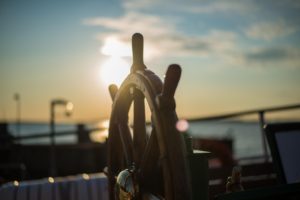Most people think that there’s not much difference between freshwater and saltwater apart from the taste. What they don’t realize is that saltwater is actually about ten times more corrosive than freshwater, thanks to its high mineral content evidenced by its salty taste. This is why sea vessels are designed with a much stronger and more corrosion-resistant hull.
When out at sea, however, corrosion is the least of a ship captain’s worries. The real enemy is not the ocean but the organisms living in it. Overtime, microorganisms, plants, algae, and other marine animals will cling on the surface of the ship. If not removed, they can build up into a large mass that can affect the buoyancy as well as the performance and safety of the ship.
Transporting Invasive Species
Biofouling is indeed harmful to ships, but as it turns out, it brings more harm to marine life all over the planet. When a certain species attaches itself to a ship’s surface, it travels along with the ship to great distances, sometimes from one ocean to another. The problem is that sometimes the marine animals that get transported are actually invasive species.
The introduction of invasive aquatic species has been identified as a major threat to the ocean and to the preservation of biodiversity. As these species proliferate, they tend to increase the competition for resources, which slowly destroys the ecosystem in the seas where they were introduced.
While the impact may be reduced if the marine organisms that have latched themselves onto ships are transported back to where they came from, this isn’t actually what’s happening. Ships’ hulls are often cleaned at the docks, consequently dumping these foreign animals where they on a far-off shore.
Using Anti-Fouling Technology
The best solution to the increasing problem with invasive species is to prevent biofouling, and this can only be achieved by making sure that ships’ hulls are resistant to any kinds of life-form. This led to the invention and use of copper-based plate for hulls. Specifically, today’s hulls are made of a type of brass called Muntz Metal.
Also known as Yellow Metal, Muntz Metal is a hot-worked metal that contains about 60% copper, 40% zinc, and a trace of iron. An alpha-beta alloy, it has an amazing crystal structure that gives it anti-fouling abilities. Adding more copper into the original brass for sale mixture allows Muntz Metal to have more copper-leaching ability, which is responsible for killing bacteria and even bigger organisms on the surface of a ship’s hull.
It is not just sea vessels that are under threat from biofouling but the piles of pier as well. Often submerged in water, they are easy target to all forms of marine life, especially teredo shipworms, which are notorious for weakening the structural integrity of these piles. Covering the piles with Muntz Metal plate or using pure Muntz metal piles prevents this kind of problem from ever occurring.
You may think that since Muntz Metal is originally made for maritime applications it isn’t commercially available. In truth, you can actually find it in many prominent copper supply stores, such as Rotax Metals. They can provide you with the materials you need for you specific project. Just make sure to explain in detail your project so that they can find you the perfect grade.


